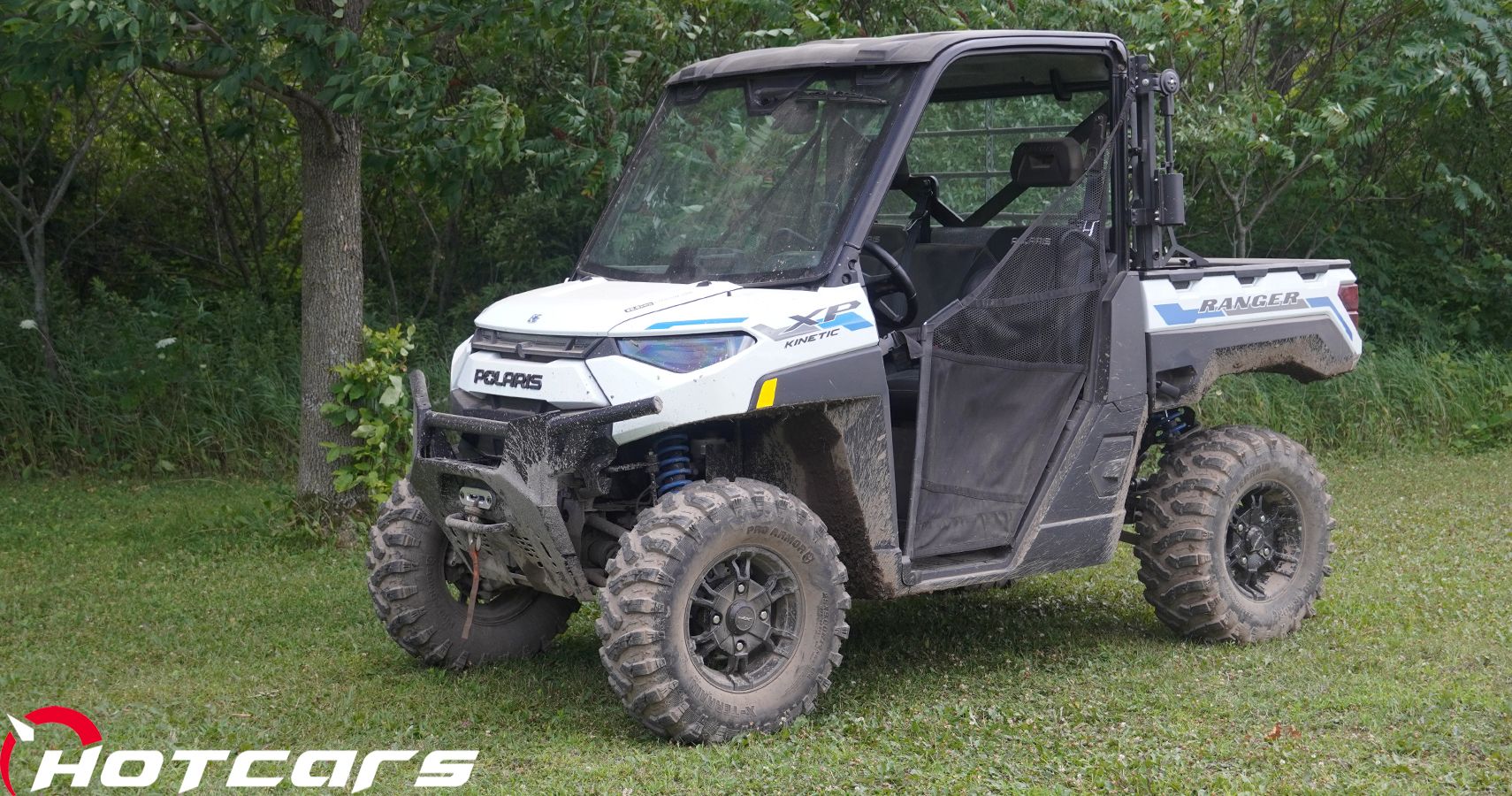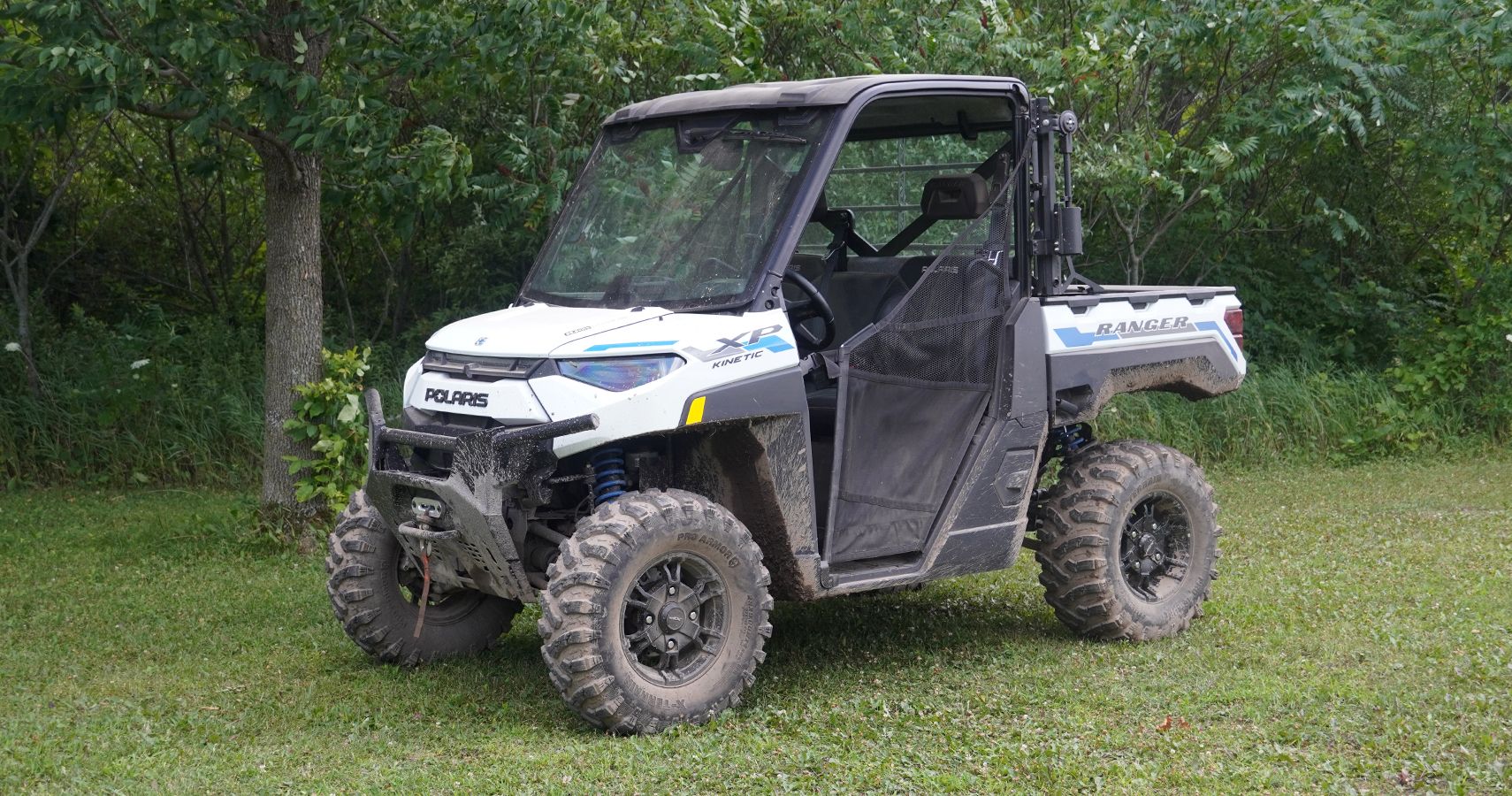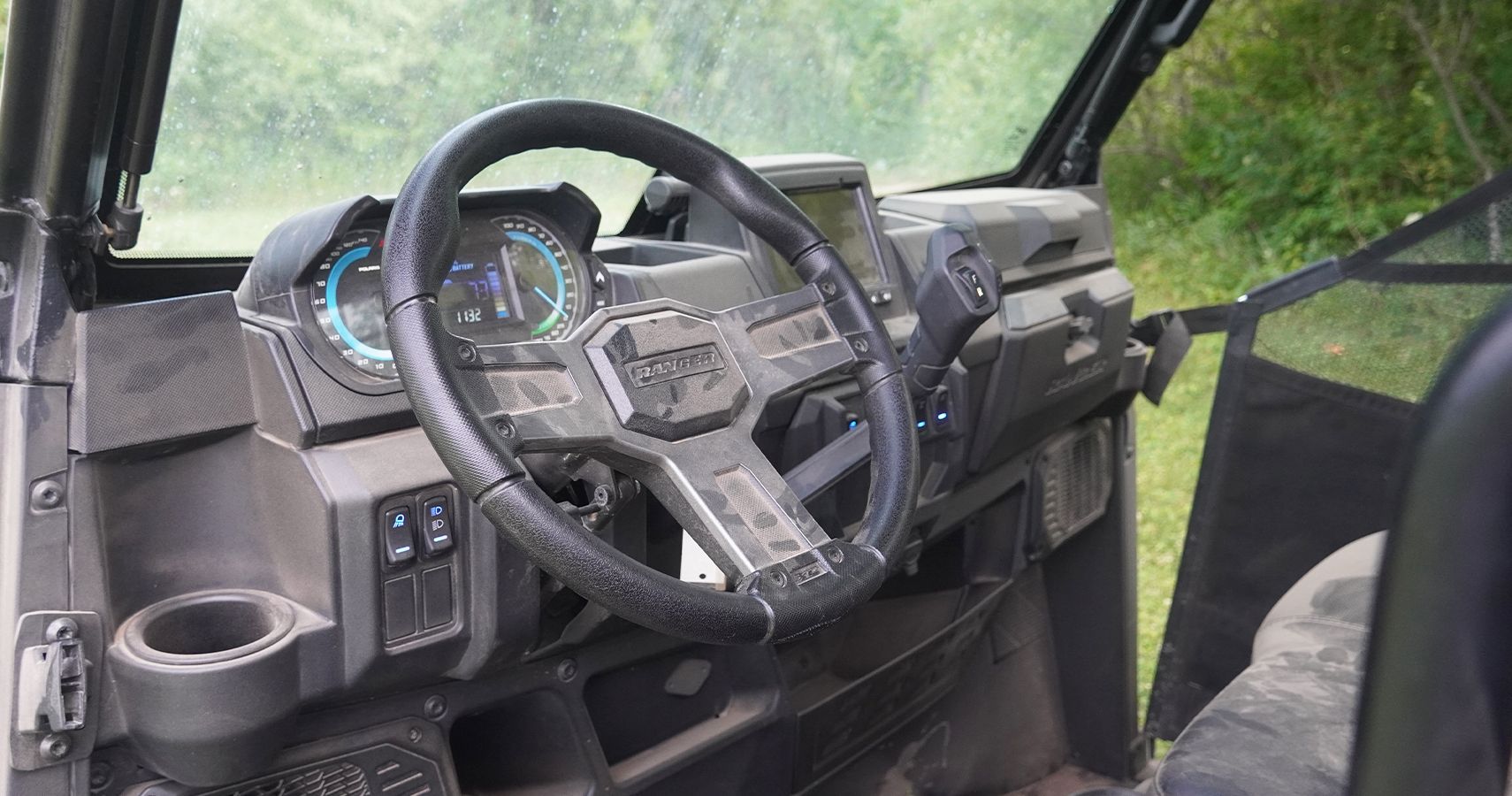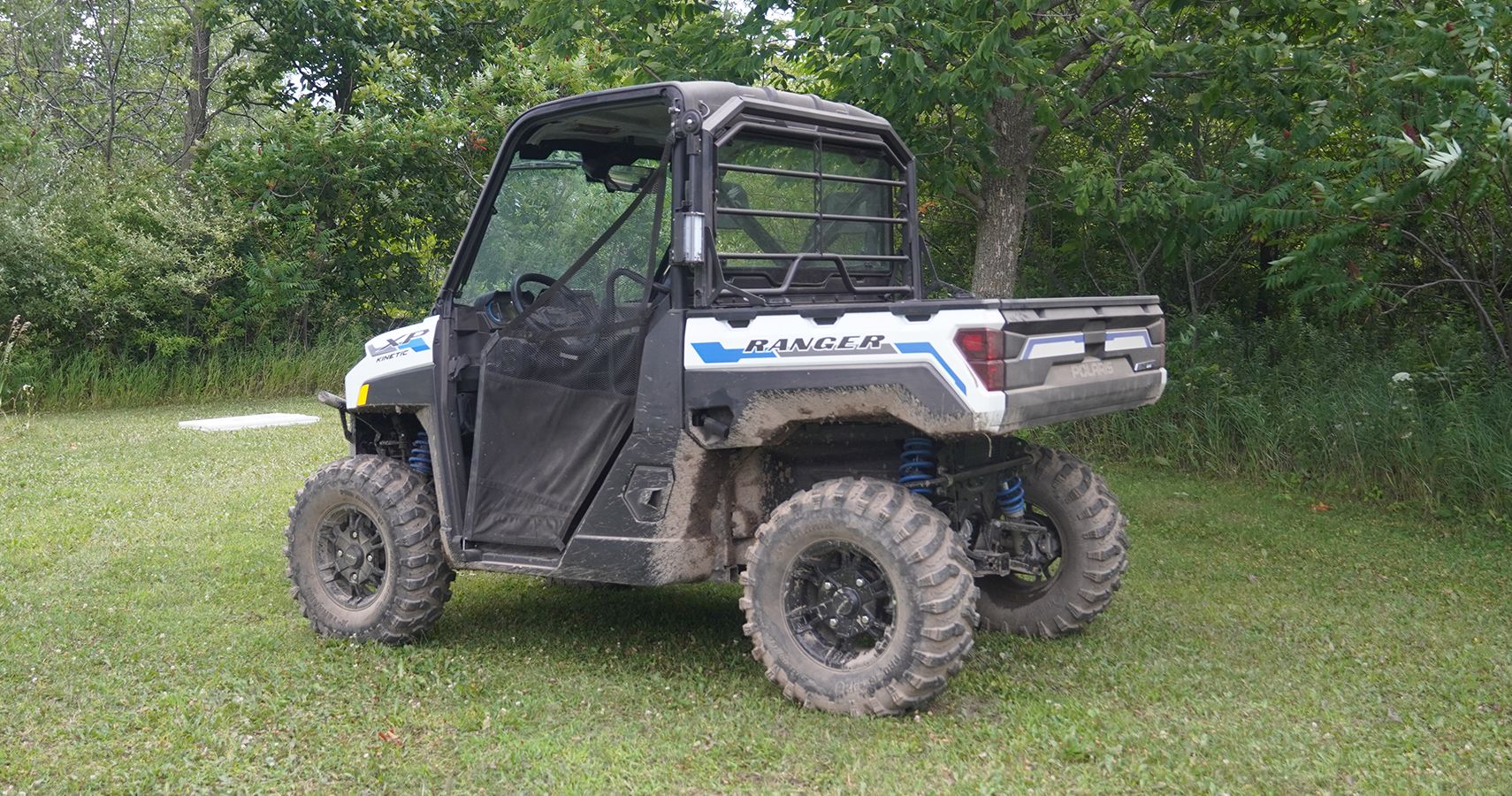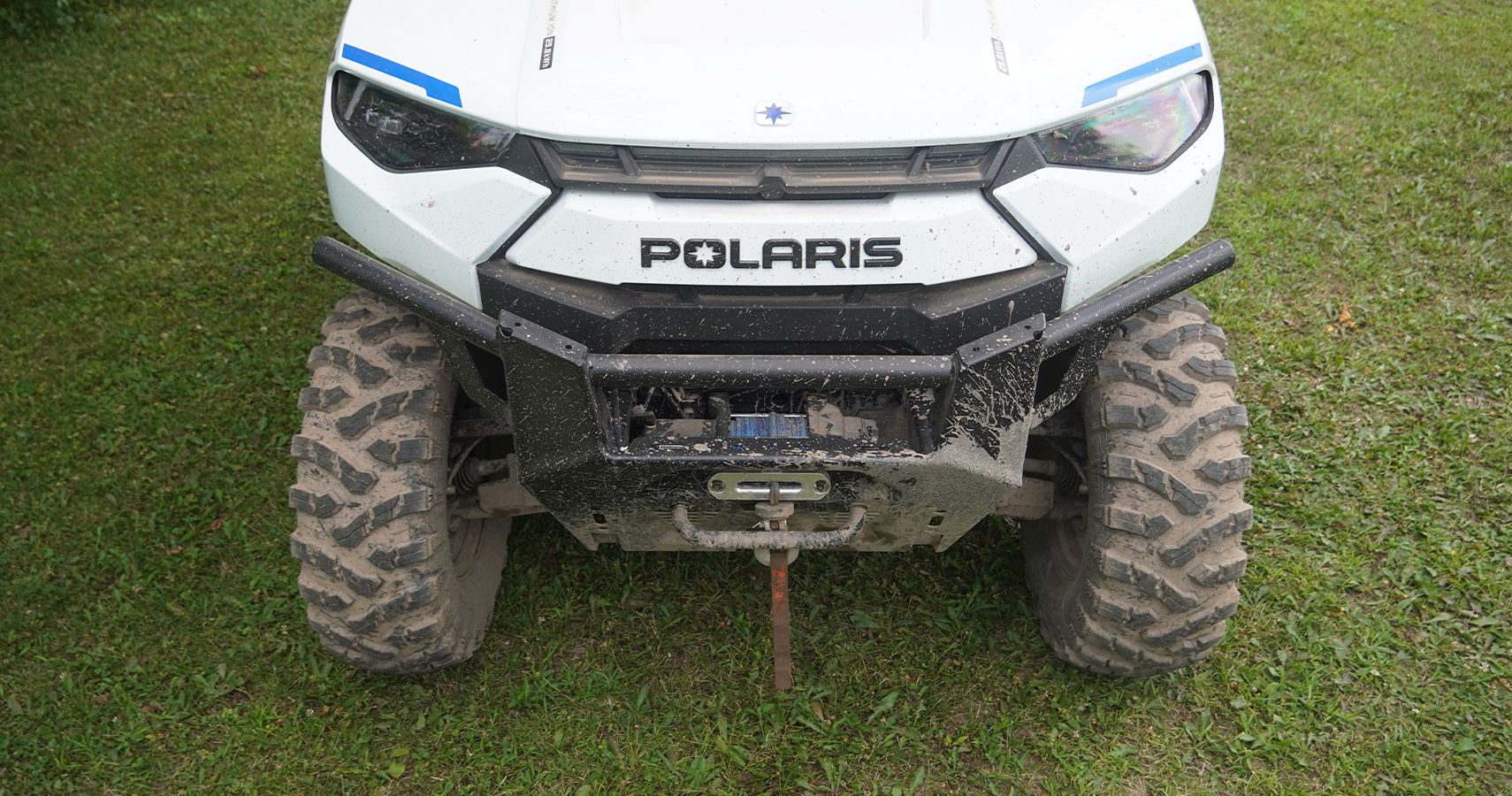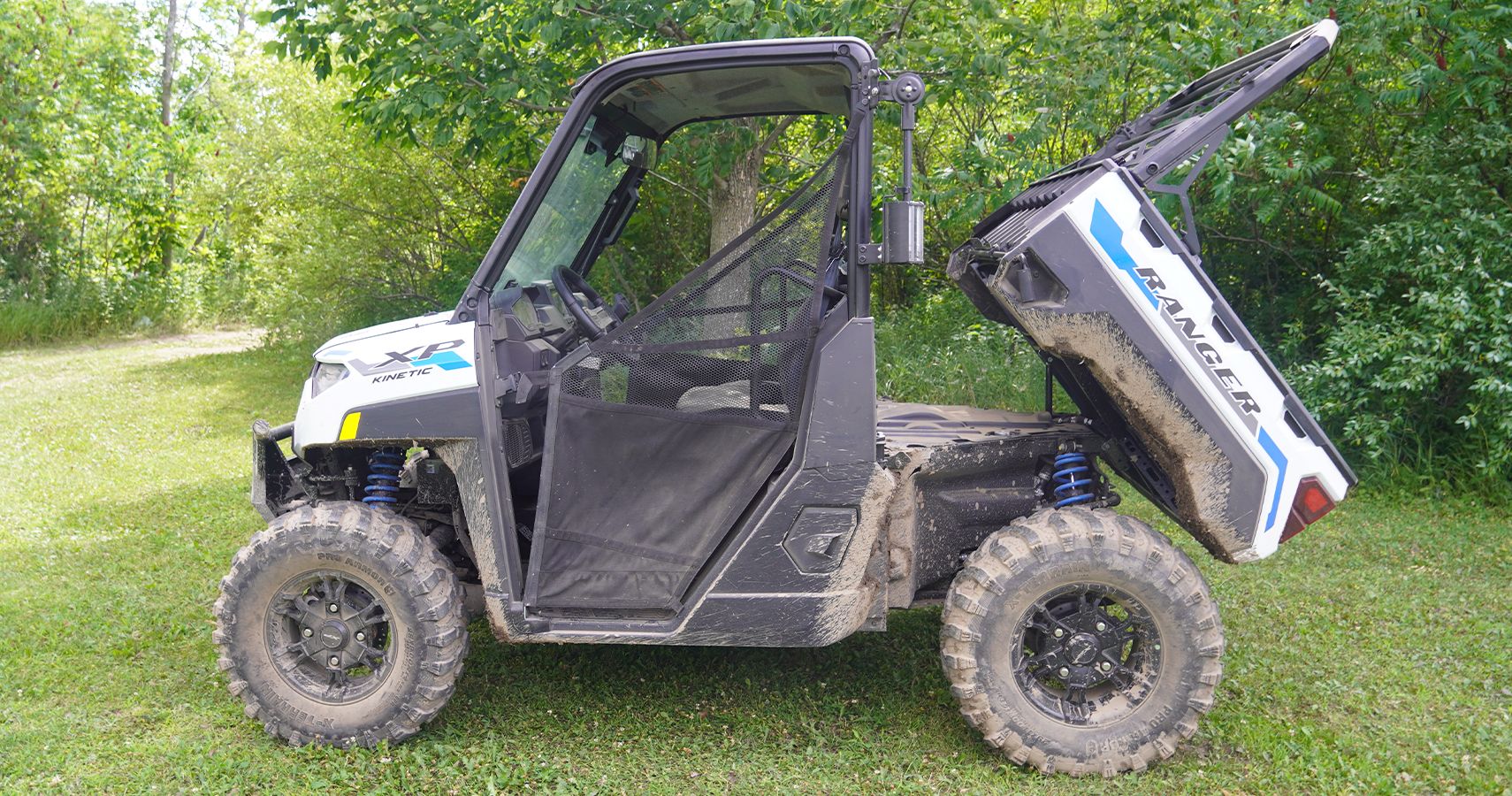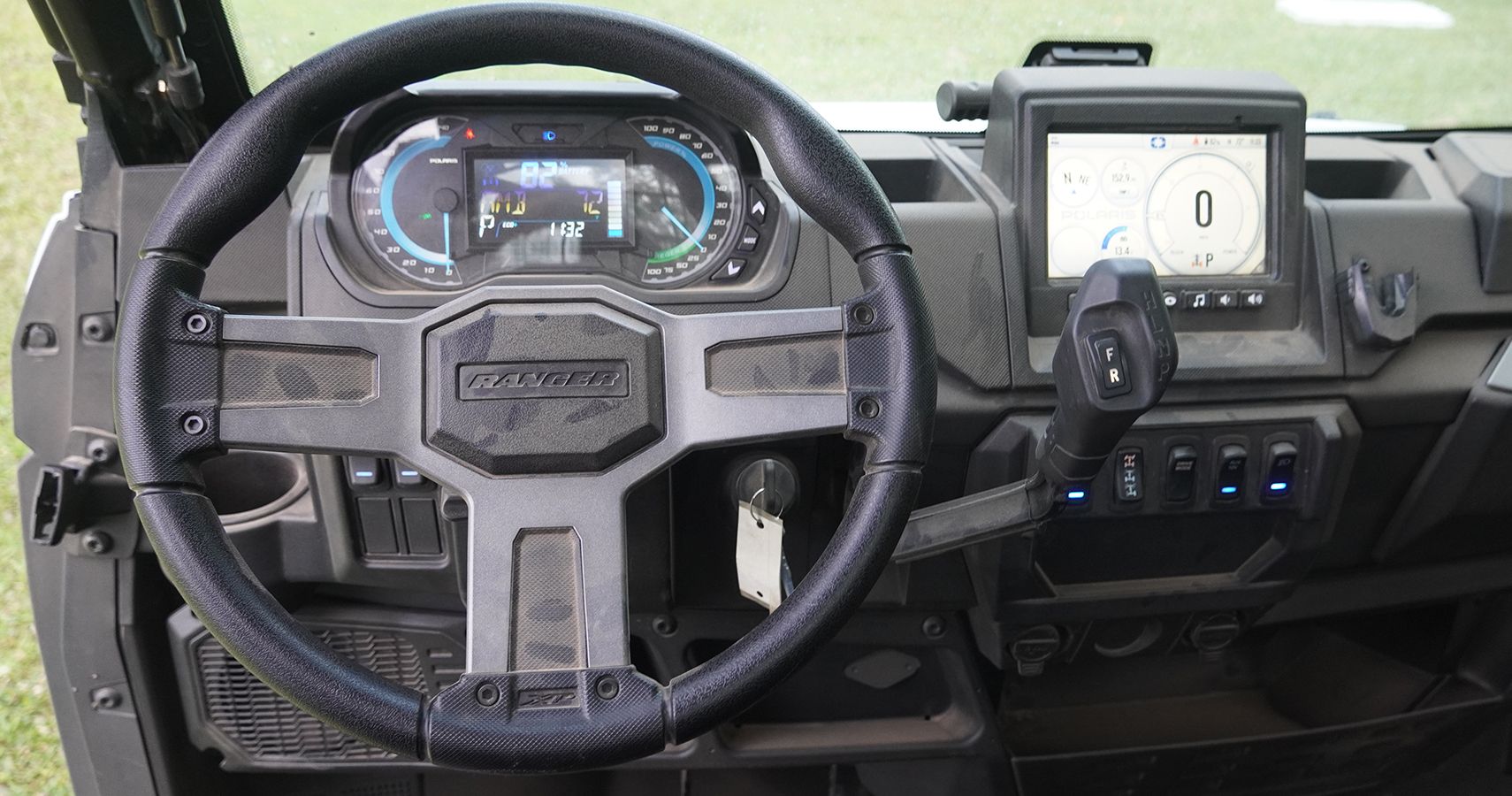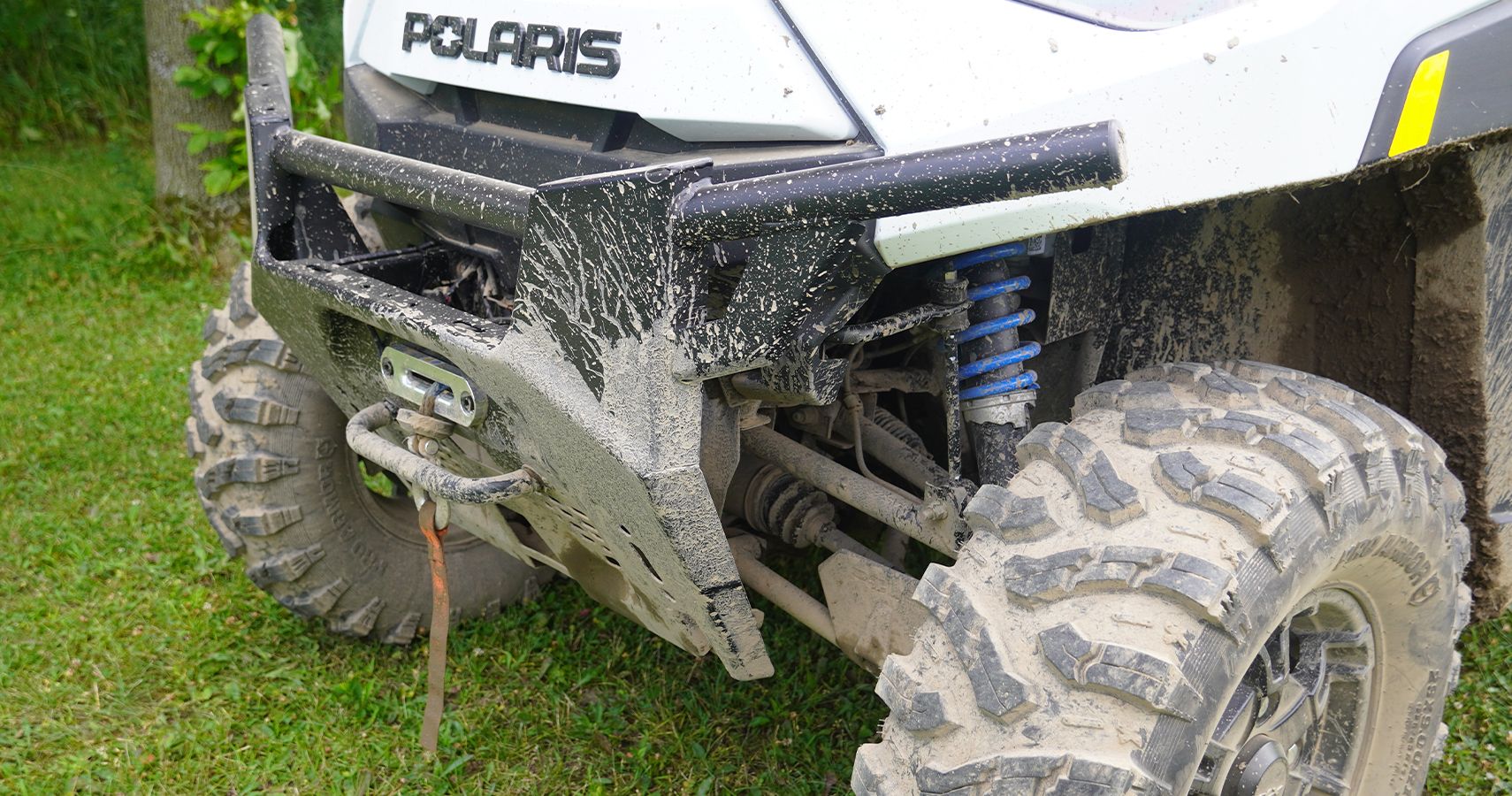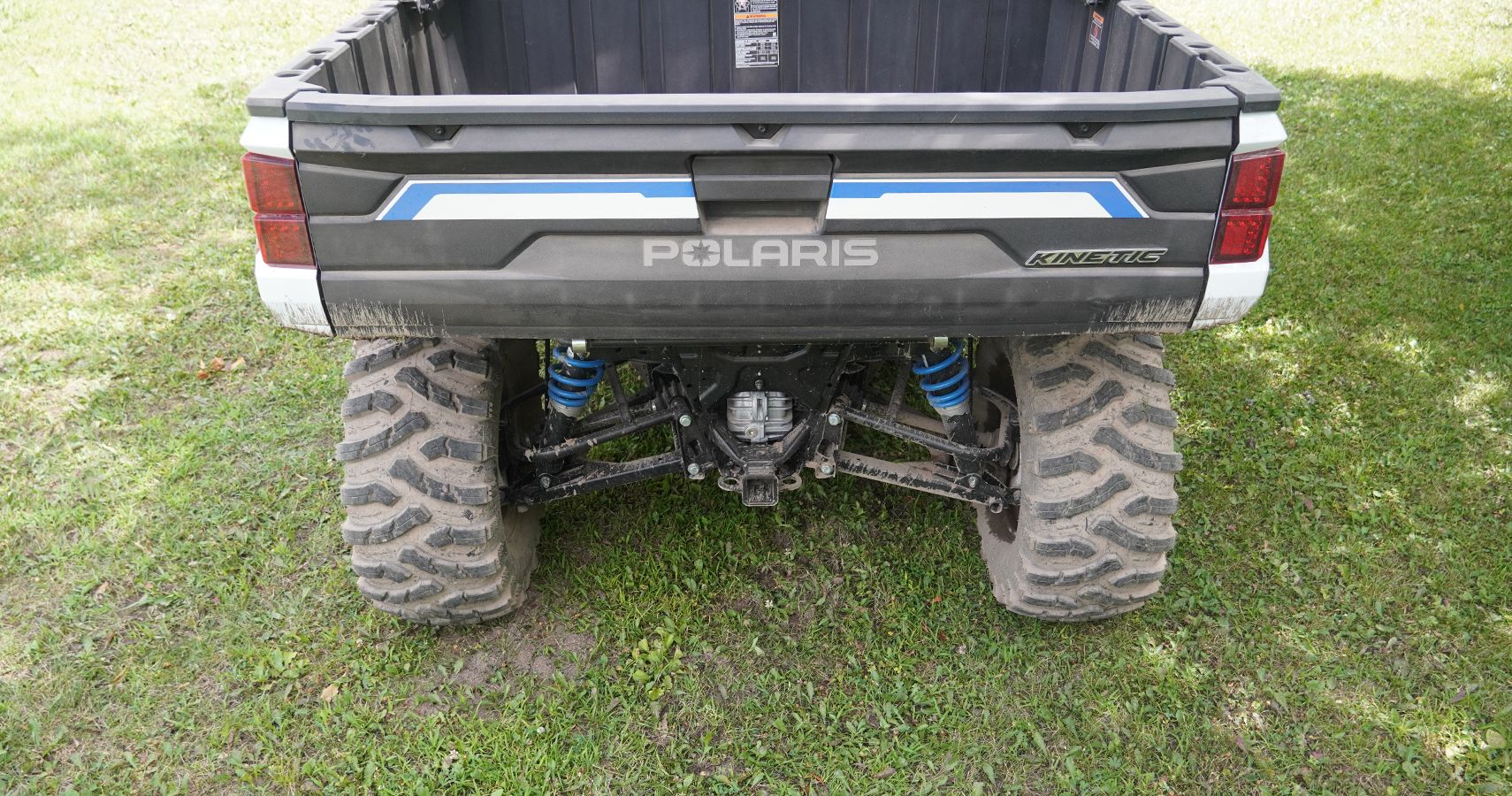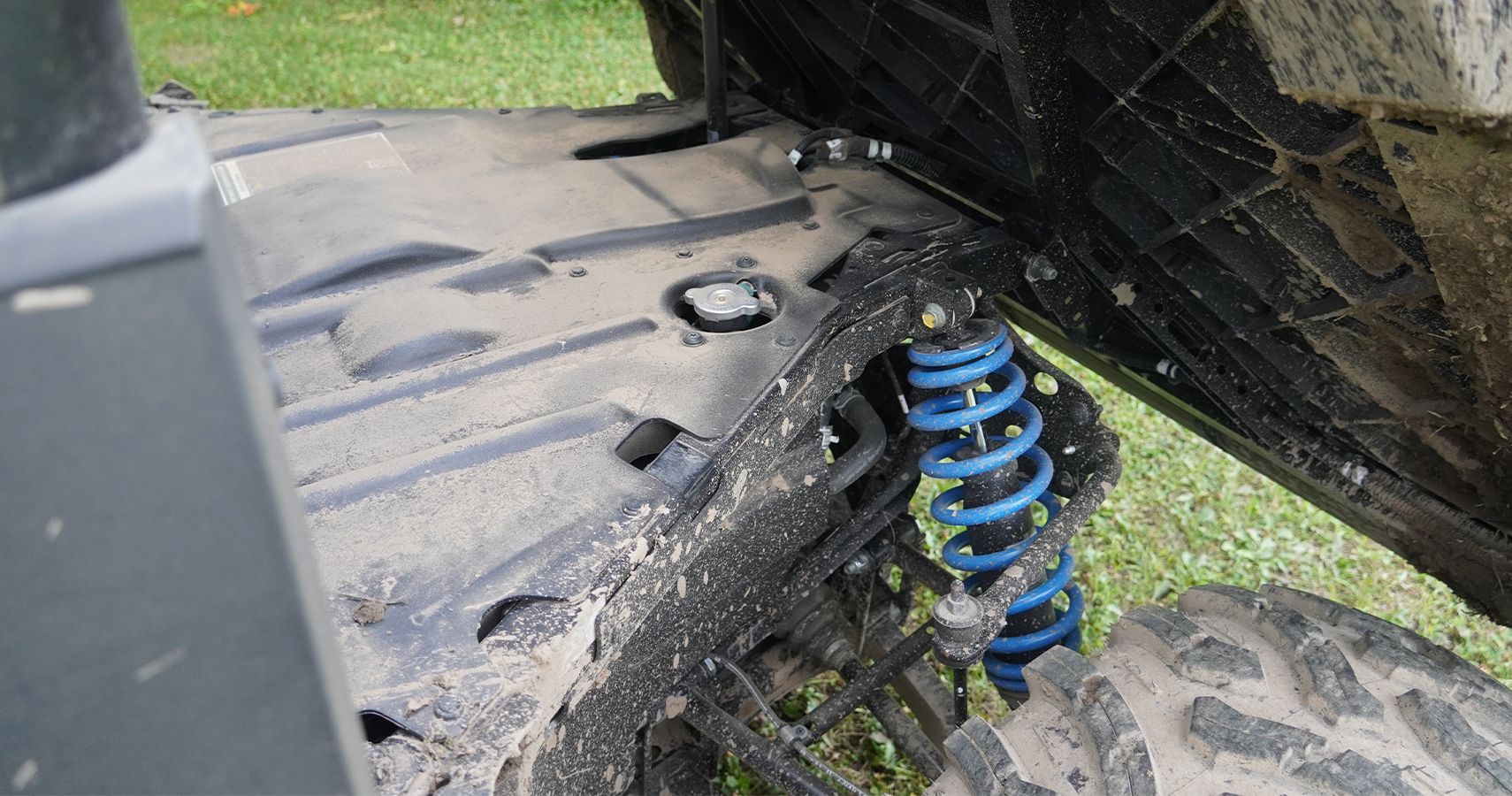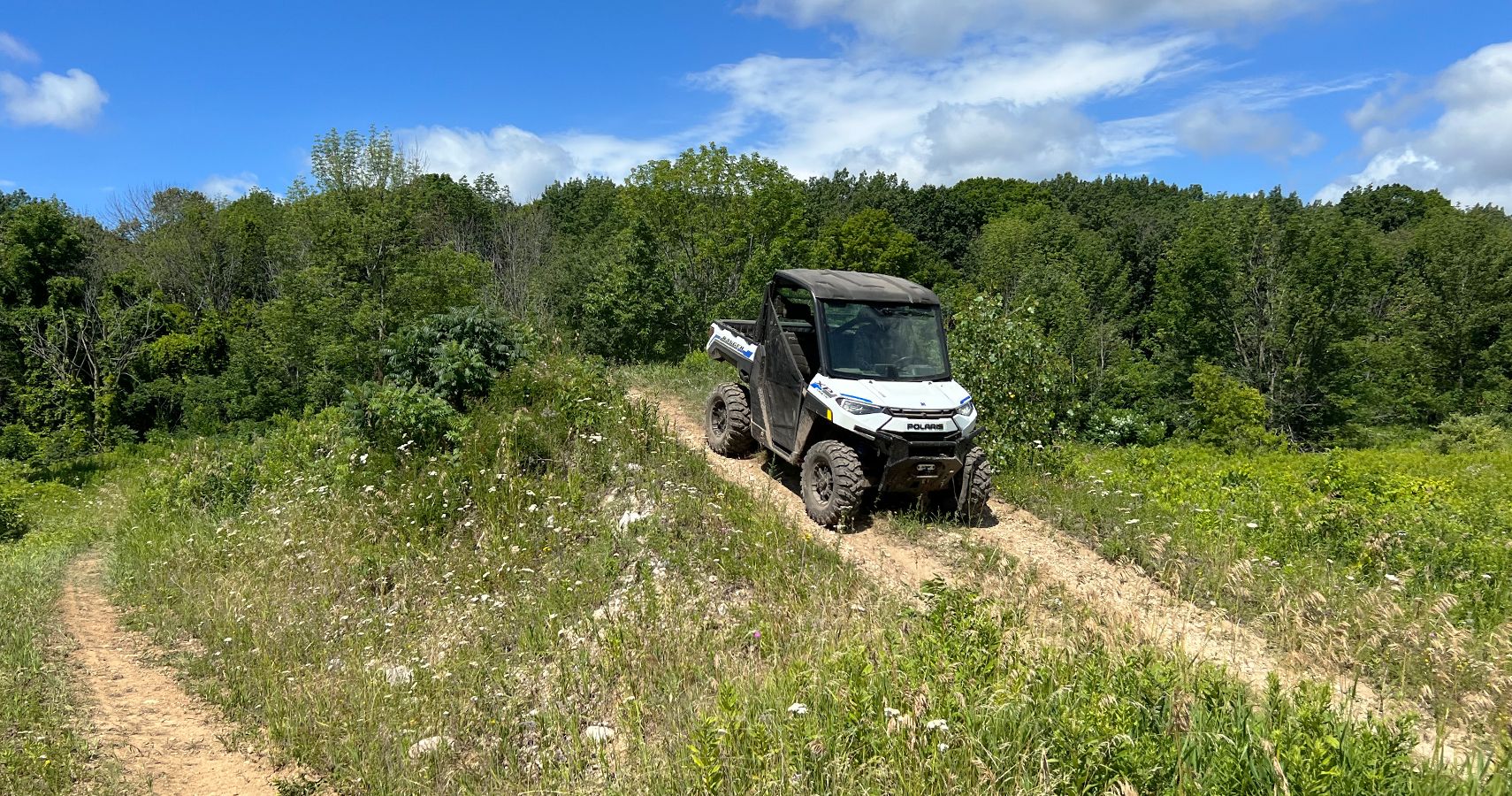Last summer at an event in Minnesota, Polaris first teased an all-electric version of the Ranger UTV. The previous two days had offered select media a chance to drive the company's full lineup of Sportsman quads, Ranger and General carts, and high-performance RZRs in various guises. But where each existing model received a largely expected round of upgrades and accessories, the all-new Ranger XP Kinetic demonstration probably represented the largest leap forward for the UTV industry in years.
Now, almost exactly a full year later, a similar melange of journalists regrouped at Road America in Wisconsin for a chance to get behind the wheel of the production Ranger XP Kinetic and experience exactly why Polaris decided to electrify the Ranger first, rather than betting on the RZR higher public profile.
Watch The Ranger XP Kinetic Rip Through The Woods
From the exterior, only a few cues hint at the Ranger's revamped drivetrain. New headlights and plenty of badging mostly serve as differentiators, though the light bar above the front Polaris logo also reveals state of charge with changing patterns based on battery status. Turn the Kinetic's key, though, and no engine fires up—this UTV is very quiet, which Polaris believes probably stands as the single biggest incentive for almost every category of Ranger ownership. But the silence belies ratings of 100 horsepower and 140 lb-ft of torque thanks to an electric motor sourced from Zero Motorcycles.
Polaris Ranger XP Kinetic
- All-electric powertrain
- New RideCommand+ system
- Two battery options
- Engine/Motor: Zero Motorcycles Electric Motor
- Horsepower: 100 hp
- Torque: 140 lb-ft
- Drivetrain: RWD/4WD/Locked
- Transmission: Hi/Lo/Reverse
- Range: 45-80 miles
- Quiet operation for neighbors, livestock, and hunting
- Instantaneous electric torque
- Solid range for a ranch cart
- Not much heavier than a gas Ranger
- Steep price for long-range Ultimate trim
- Reliability concerns
- Still requires coolant
Why Polaris Electrified Ranger First
Otherwise, the Ranger looks very similar to the familiar utilitarian ranch cart layout. But that's the whole point. Rather than dropping a couple of electric motors into a RZR, with all the long travel suspension to lift the chassis up high, Polaris decided that the pros of electrification most significantly benefit the Ranger, while increased weight paired with range anxiety still present a challenge for higher-speed shenanigans in a potential electric RZR.
A pair of battery options for the Premium and Ultimate trims of the Kinetic essentially double capacity from 14.9 kWh to 29.8 kWh, respectively. The additional cells in the Ultimate result in a 200-pound weight increase versus a similar Ranger XP with a gasoline powertrain, while the Premium weighs around 100 pounds more—doing the math, each battery pack from weighs around 100 pounds, then. And each 100 pounds contributes range to the tune of 45 miles for the Kinetic Premium and 80 for the Ultimate (though long-distance range becomes less of a question for the Ranger, to be fair, than work time and accessory use cases).
Updates To RideCommand For Electric Powertrain Info
The Ultimate trim also comes with an updated version of the RideCommand touchscreen infotainment system that features on most other Polaris products. New readouts on the gauge cluster complement displays for battery charge status, range remaining, and temperature—all of which is now also visible on the Polaris RideCommand+ smartphone app, in addition to previous features including ride tracking, navigation, Group Ride connectivity, and more.
The Kinetic Premium starts at $24,999 and the Ultimate package ups the ante to $29,999. Given the state of range anxiety among new and experienced EV owners alike, plus the additional RideCommand features that help to quell such concerns, all the Polaris reps on hand at Road America certainly seemed confident that the higher-priced Ultimate will nonetheless sell like hotcakes.
(Almost) All The Standard Ranger Features
Otherwise, Polaris told us that 95% of Ranger accessories carryover from ICE to EV. Winches, racks, windscreens and doors, bumpers, and more obviously entice buyers to throw a few more thousand onto their financed Ranger without much concern that they might increase monthly payments too much.
Perhaps most important to ranchers and anyone who wants an electric Ranger to silently tool around their property, the Kinetic receives an improved tow rating of 2,500 pounds and a 1,250-pound payload for the dumping bed. And with the instantaneously available torque of electric motors, towing the same load behind a gas versus an electric Ranger will not feel at all similar—trust me.
Much Faster And Far Less Noisy
Polaris dropped us in a small fleet of Ranger Kinetics for hot laps through the Road America woods. The first few corners gave our ragtag group (getting dirtier by the minute) a chance to reacclimate to the short wheelbase and narrow track, plus fiddle with Sport, Standard, and Eco+ modes that affect throttle response (or accelerator pedal response, anyway).
By the time we reached a meadow and floored it, the slight whine of the Kinetic's electric motor emerged as a fun factor—ramping up as we launched forward faster than probably any side-by-side I've driven previously. Again, instantaneously available torque for the win when it comes to straight-line acceleration. But forget leaving the Kinetic in rear-drive only without switching down to Eco+ mode, unless uncontrollable drifts despite the mid-grade Maxxis tires sound fun (they are, by the way).
After we rushed through the fields, over a few man-made obstacles, and jounced our way through rocks and roots, a few clear questions cropped up in my head about the Ranger. After all, how did Polaris drop in the battery packs and an electric motor from Zero Motorcycle? Turns out, much of the driveline remains the same. The batteries mount under the driver's seat and, on the Ultimate, another behind the seatbacks. Lifting the bed reveals a flat surface where a little gas engine might once have lived—but hold on, is that a coolant cap?
Adding Batteries To The Ranger Platform
Yep, while the batteries and motors remain air-cooled, Polaris uses a small coolant reservoir, radiator, and fan to keep the motor controller happy. Unfortunately, on a hot and humid day in Wisconsin, that radiator fan sounds pretty loud without a gasoline engine to cover up the cacophony. At least it only runs some of the time.
Rather than a dual-motor all-wheel-drive layout, Polaris decided to use a reinforced version of the gas Ranger's driveline, in this case without a CVT because the electric motor revs enough to reach around 50 miles per hour with high range selected. A cog belt a la Indian and Slingshot delivers power to the transmission on the way to the rear wheels, then a prop shaft can send grunt to the front wheels with the flip of a switch on the dash.
Any mention of a Polaris CVT immediately brings up images of belt replacement jobs, while the novel application of an electric motor and batteries might give potential buyers reason to pause. To help with such concerns, Polaris doubled the Ranger Kinetic's warranty to a full year, plus three years of coverage for the electric powertrain and five years for the battery itself.
Convenience Comes At A Cost
The Kinetic also receives suspension revisions to help cope with the battery's weight, though a center of gravity around one inch lower already helps to noticeably reduce the sensation of tippiness during cornering and off-camber sections. Altogether, the electrification feels like a big step right from the get-go—and anyone who drives a Kinetic will immediately recognize why hunters, ranchers, and just about any do-it-yourselfers might prefer a quieter Ranger that never emits gasoline fumes (less concern for livestock in a barn, for example).
The convenience factor alone should make the Kinetic a sales success—if not, all the low-end torque also makes the Kinetic much faster, for buyers who need to feel such sensations in the seats of their pants. A few points of hesitation emerged, however: namely, that unlike the Ford F-150 Lightning, Polaris only decided to equip the Kinetic's bed with a 12-volt trickle charger plug for agricultural tools rather than a fully functional outlet. And charge times remain a concern, even if the included SAE port and charger allow for fast charging.
In today's era of rapid electric advancements, other UTV companies likely hope to follow in the Ranger XP Kinetic's footsteps. High-performance models from Polaris also seem inevitable, even if a ways off still. And yet, given the new all-electric Ranger's current potential (puns fully intended), blazing the trail first will probably pay big dividends in the meantime.
Sources: polaris.com, roadamerica.com, youtube.com, zeromotorcycles.com,

